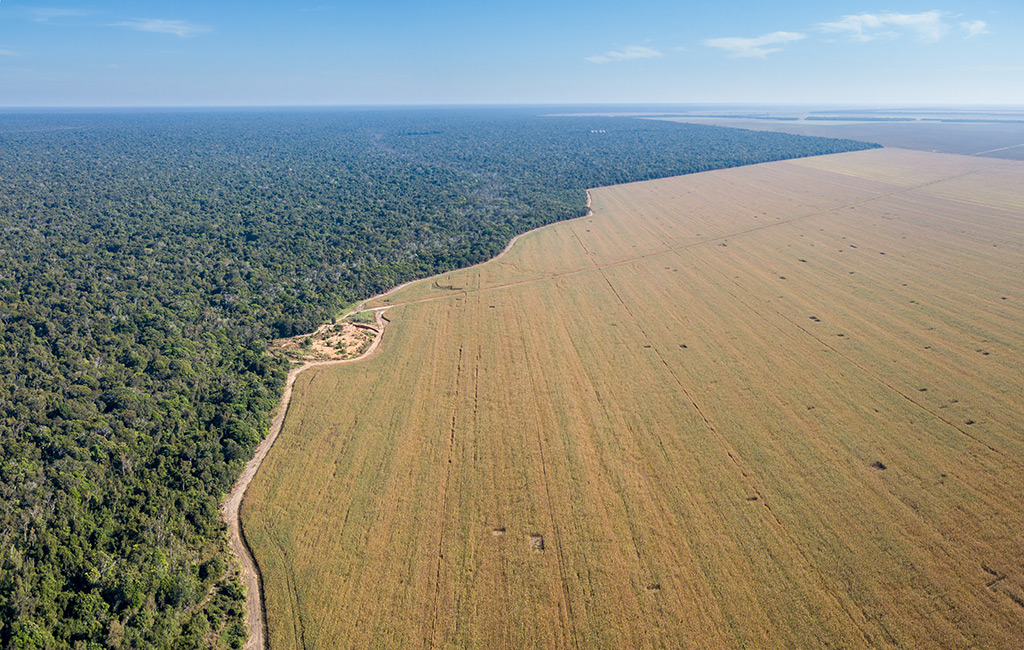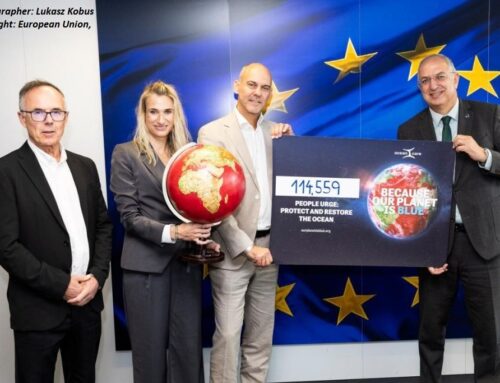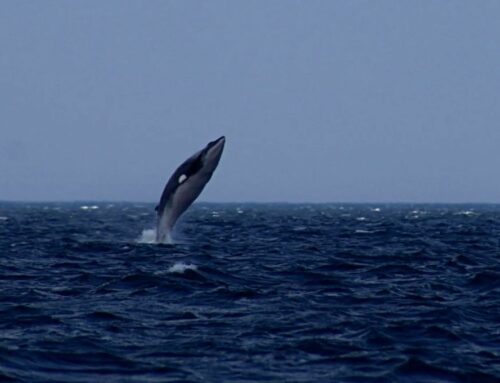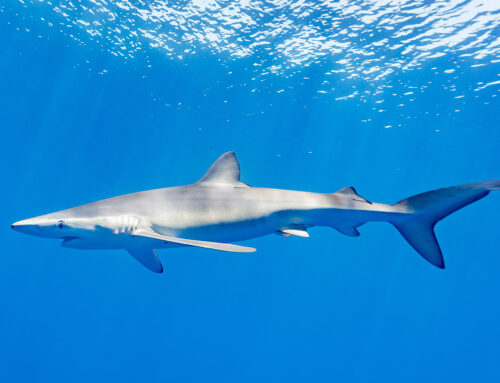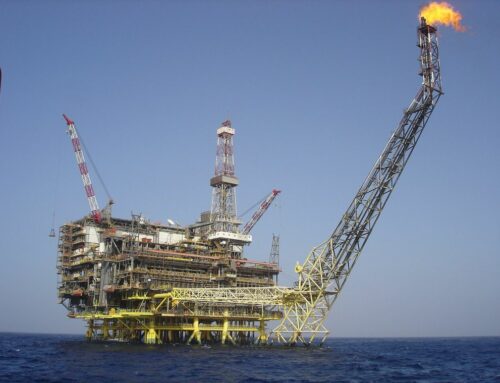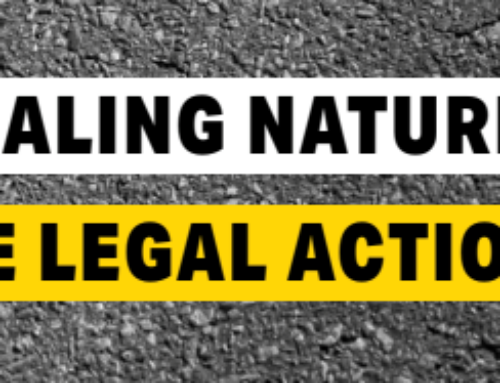It’s quite amazing. You can hardly look into any environmental problem without coming upon the meat issue. Same recently with the lawsuit filed by the organisation AllRise against Jair Bolsonaro before the International Criminal Court. The Brazilian president is accused of committing crimes against humanity by accelerating and amplifying forest destruction.
There are many causes for the destruction of forests in the Amazon and other regions of Brazil, including the greed for timber, gold – and meat. Meat production requires one thing above all: a lot of land. Land that is lost to natural plant and animal communities. Land used to grow feed for pigs, poultry and cattle instead of food for humans. Land which emits massive amounts of greenhouse gas instead of binding it.
In Brazil, the area under soy exploded from one and a half to 34 million hectares between 1970 and 2017. This soy is not for human consumption, but is fed to pigs, chickens, turkeys and cattle around the world. The consumption of poultry meat in the EU occupies just for soy production (i.e. in addition to all the feed grain) an estimated 3.2 million hectares worldwide (for comparison: Austria has 1.3 million hectares of arable land).
The Austrian Ministry of Agriculture summarises this situation as follows: “The bulk of protein is not directly consumed by humans, but used as feed for the production of animal-based foodstuffs. This … leads to a demand for protein that partly has to be covered by imports. Particularly in connection with land use change or deforestation in other continents, imported foodstuffs and animal feed partly have a very negative impact on the climate and the environment.”
EU member states imported more than 30 million tonnes of soy in 2019 (more than 10 times their domestic production), of which 13.7 million tonnes came from Brazil and about 95% was genetically modified. Germany imports close to six million tonnes of soy for animal feed, Austria about half a million tonnes. Only about a quarter of this is certified as “deforestation-free”.
A study recently published in Science estimates that 20% of the soy and 17% of the beef exported from the Amazon and Cerrado regions to EU countries involve illegal deforestation.
Beef? Yes, Europe also imports (in addition to massive amounts of poultry meat) about 120,000 tonnes of beef from Brazil each year, equivalent to more than 3,000 hectares of deforestation risk each year.
Sigh! What to do? At least in terms of our meat consumption’s share in nature destruction in Brazil, the solution is obvious. In both Germany and Austria, we consume twice as much meat as the official dietary guidelines stipulate as the maximum. This means that the problem could be solved simply by eliminating the excess, unhealthy half of our meat consumption.
A small (highly simplified, excuse me) estimate: In 2020, Austria produced 200,000 tonnes of soy on 68,500 hectares of arable land – roughly in equal parts for human food and animal feed. Thus, about 600,000 tonnes of soy are currently used as animal feed (100,000 tonnes from domestic production, 500,000 tonnes imported). If the consumption of animal products was halved, about 300,000 tonnes of fodder soy would still be needed, which would require about 103,000 hectares of arable land. Of the 1.3 million hectares of arable land in Austria, about half (668,000 hectares) is used to grow animal feed, mainly cereals. So halving meat consumption would free up about 334,000 hectares – more than three times as much as would be needed to grow fodder soy. What could we do with the remaining arable land? Grow food for people instead of importing it, grow energy crops instead of burning fossil fuels, restitute land to nature, etc. etc. Remember, in this scenario we are very far from vegetarianism. We just rid ourselves of the unhealthy surplus of animal-based foods.
Isn’t it nice when there is a simple solution to a big problem? Bon appétit!



